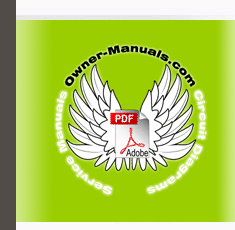|
|
|
Categories
|
|
Information
|
|
Featured Product
|
|
|
 |
|
|
There are currently no product reviews.
 ;
I liked the product. I would use their sevices again.
 ;
I Recently purchased yet another Service Manual from Owner-Manuals.com, this time for a Sony EVS700ES/UB Videocassette Recorder. The Manual was available for upload within two hours and is an Extremely Good copy, as some of this I was able to enlarge to get even better detail.
Once Again, Very happy with the result!
 ;
A good and useful manual. With these, We was abled to isolate and pin point the component that was causing the problem. The total time spent in troubleshooting is very much reduced.
 ;
The quality of the manual is top. The transfer worked perfect and fast.
No problems at all. Recommendable
 ;
Very good service for get any documentation. Fast and perfect quality.
1
2
3
4
2.3 NETWORK ASSY
Before removing the Network Assy, remove the grille and each speaker unit then disconnect the cords from the speaker unit. � For removal/reattachment of the Network Assy for the woofer: Only the woofer must be removed. � For removal/reattachment of the Network Assy for the midrange/tweeter: Removal of all the units is required.
A
2.3.1 Network Assy for the Woofers
� The Network Assy for the woofers is located inside the back board behind the lower woofer and secured with 4 screws. (1) Remove the acoustic absorbent pads at the input terminals. (See Figs. 2-5 to 2-8.) (2) Remove the 2 nuts that secure the round connectors from the lower input terminals. (See Fig. 2-1. Tool: Box wrench, 14 mm/GGH-002) (3) Remove the 4 screws that secure the Network Assy then pull the Assy out through the hole where the woofer was attached. (See Fig. 2-2.) (4) When reattaching, pass the Network Assy through the hole where the lower woofer was attached then secure it in place with the 4 screws. (See Fig. 2-2.) (5) Among the 3 pairs of cords from the Network Assy, connect the cords with black tape to the lower input terminals and secure them with the nuts. (See Fig. 2-1. Tool: Box wrench, 14 mm/GGH-002) (6) Apply adhesive to the secured nuts. (Adhesive: DIABOND black/GYL-014) (7) Reinstall the acoustic absorbent pads at the input terminals. (See Figs. 2-5 to 2-8.) (8) Among the 3 pairs of cords from the Network Assy, connect and solder the remaining 2 pairs of cords with white tape to the woofer and reattach the woofer in the cabinet.
2.3.2 Network Assy for the midrange / tweeter
� The Network Assy for the midrange/tweeter is attached to the inside of the left side board behind the upper woofer, using 4 screws. (1) Remove the acoustic absorbent pads at the input terminals, inside and at the rear of the chamber, and behind the chamber. (See Figs. 2-5 to 2-8 and 2-9 to 2-11.) (2) Remove the 2 nuts that secure the round connectors from the upper input terminals. (See Fig. 2-1. Tool: Box wrench, 14 mm/GGH-002) (3) Remove the 4 screws that secure the closure panel inside the chamber, remove the 4 screws that secure the Network Assy, and pull the Network Assy out through the hole where the woofer was attached. (See Figs. 2-3 and 2-4. Tool: Screwdriver/GGK1012) (4) When reattaching, pass the Network Assy through the hole where the upper woofer was attached and secure it in place using the 4 screws. (See Fig. 2-3. Tool: Screwdriver/GGK1012) (5) Among the cords from the Network Assy, connect the cords with the round connectors to the upper input terminals and secure them with the nuts. (See Fig. 2-1. Tool: Box wrench, 14 mm/GGH-002) (6) Apply adhesive to the secured nuts. (Adhesive: DIABOND black/GYL-014) (7) Pass the 2 pairs of cords from the closure panel through behind the chamber then secure the closure panel from inside the chamber, using the 4 screws. (See Fig. 2-4.) (8) Reinstall the acoustic absorbent pads at the input terminals, inside and rear of the chamber, and behind the chamber. (See Figs. 2-5 to 2-8 and 2-9 to 2-11.) (9) Connect and solder the cords to the coaxial-unit speaker and reattach it in the cabinet.
B
C
Apply adhesive. +: White with Black line
From the Network Assy for the midrange/tweeter From the Network Assy for the woofers
-: White Apply adhesive.
D
Fig. 2-1: Input terminals (inside the cabinet) Upper side Upper side
E
Closure panel : Screws
Bottom side Bottom side : Screws Fig. 2-2: Specifications for attaching the Network Assy for the woofers : Screws Fig. 2-3: Specifications for attaching the Network Assy for the midrange/tweeter
Chamber Fig. 2-4: Specifications for attaching the closure panel (cross-sectional view of the coaxial-unit speaker)
F
S-1EX
1 2 3 4
9
|
|
 |
> |
|
